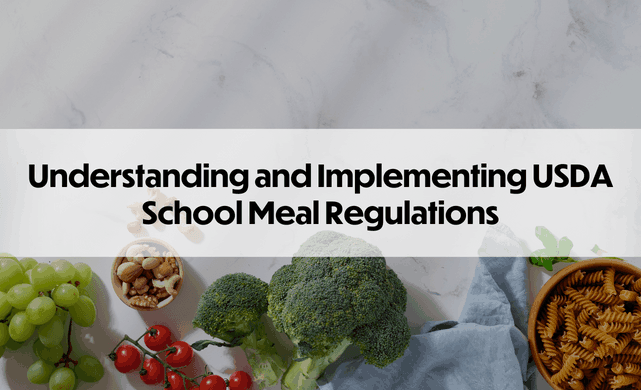School meal regulations are an important aspect of ensuring that students receive healthy and nutritious meals during their time in school. The United States Department of Agriculture (USDA) has developed guidelines and regulations that schools must follow in order to receive federal funding for their school meal programs. Today we will explore the basics of USDA school meal regulations and how schools can implement them to provide students with healthy and delicious meals.
What are USDA School Meal Regulations?
USDA school meal regulations are a set of guidelines developed by the USDA to ensure that schools are providing students with healthy and nutritious meals. These regulations apply to schools that participate in the National School Lunch Program (NSLP) and the School Breakfast Program (SBP). Schools that participate in these programs receive federal funding to provide free or reduced-price meals to eligible students. The USDA school meal regulations set standards for the types and amounts of foods that must be offered in school meals, as well as the nutritional content of those foods. These regulations also require schools to offer a variety of fruits and vegetables, whole grains, and low-fat dairy products in their meal programs.
Implementing USDA School Meal Regulations
Implementing USDA school meal regulations can be a daunting task for schools, but it is essential for ensuring that students receive healthy and nutritious meals. Here are some tips for schools to implement these regulations.
Plan menus that meet USDA requirements: Schools should use the USDA meal pattern guidelines to plan menus that meet the nutritional requirements set by the USDA. This includes offering a variety of fruits and vegetables, whole grains, and low-fat dairy products.
Offer taste tests: Schools can offer taste tests to allow students to sample new foods and provide feedback on the menu items. This can help increase student acceptance of healthier foods.
Educate students on healthy eating: Schools should provide nutrition education to students to help them make healthy food choices. This can be done through classroom lessons, posters in the cafeteria, and other educational materials.
Involve parents and the community: Schools can involve parents and the community in their school meal programs by hosting taste test events, offering cooking classes, and providing nutrition education to parents.
USDA school meal regulations are important for ensuring that students receive healthy and nutritious meals while in school. By implementing these regulations, schools can provide students with the tools they need to develop healthy eating habits that will last a lifetime. By planning menus that meet USDA requirements, offering taste tests, educating students on healthy eating, and involving parents and the community, schools can successfully implement these regulations and provide their students with delicious and nutritious meals.
